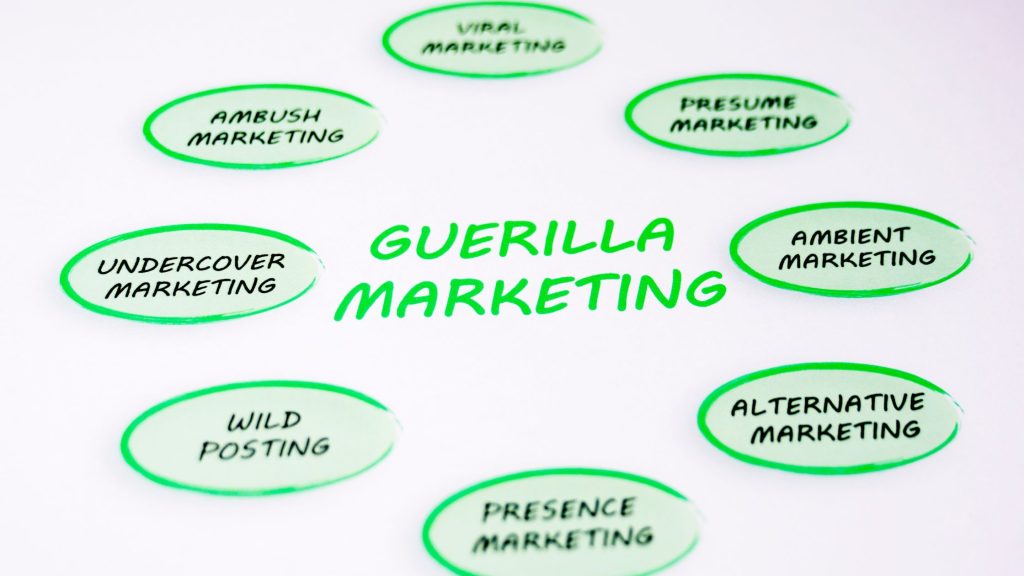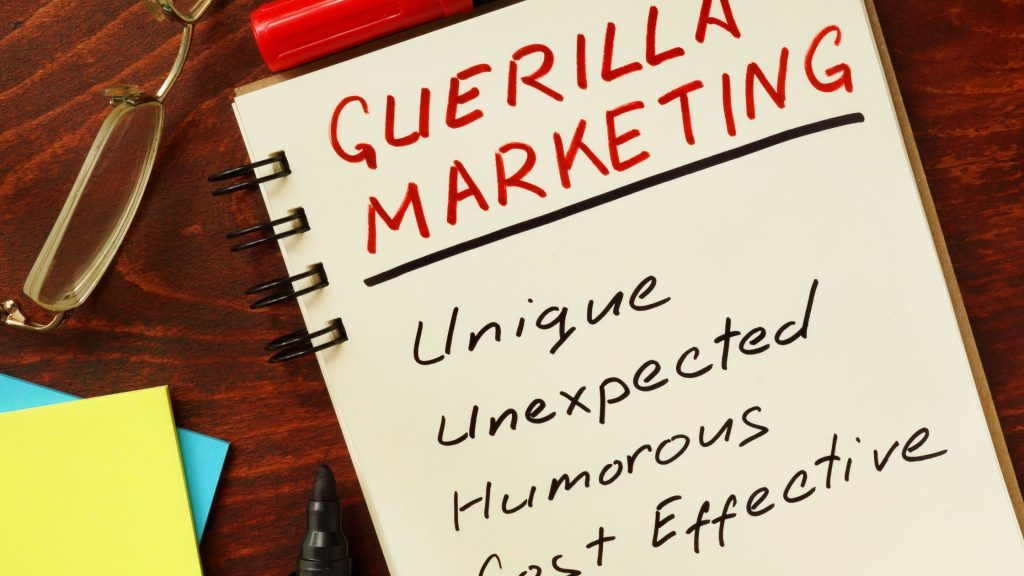Guerilla marketing examples are a great way to understand this unconventional and disruptive marketing tactic and can inspire you to create one for your brand.
Guerilla marketing uses unconventional, disruptive tactics to generate buzz and increase brand awareness. When executed creatively, guerrilla campaigns garner attention by surprising people and disrupting the expected. Unlike traditional advertising, guerrilla marketing relies on imagination and ingenuity more than big budgets. Tactics focus on high-impact ideas that prompt discussion and sharing on social media or earned media coverage.
This article will highlight 15 excellent examples of successful guerilla marketing campaigns and break down what made them so effective. These innovative promotions achieved impressive results for brands both big and small across a diverse range of industries.
15 Impactful Guerilla Marketing Campaign Examples

Here are 15 creative guerilla marketing examples to analyze and draw inspiration from for your own brand’s campaigns:
1. The Deadpool Tinder Profile
To promote Deadpool 2 ahead of Valentine’s Day 2018, the anti-hero main character got his own Tinder profile as part of the movie’s guerrilla marketing strategy. It included cheeky photos and a witty profile copy referencing the upcoming film.
What made it successful:
- Leveraged the popularity of the existing platform (Tinder) to reach the target demographic
- Humor and irreverence fit Deadpool’s brand personality
- Drove earned media and social shares
2. IHOP Temporarily Rebrands to IHOB
In 2018, IHOP jokingly rebranded itself as IHOB to promote a new line of burgers. This included changing their logo and social channels. It sparked endless chatter and debate, with IHOP later revealing it was just a promotion.
What made it successful:
- Got people talking about the brand
- Generated debate and speculation on social media
- Increased awareness of IHOP’s new menu items
3. The Tide Super Bowl Ad Stunt
During the 2018 Super Bowl, Tide created a series of ads that appeared to be promotions for other products – a car, beer, jewelry – before revealing they were Tide ads. This quirky campaign generated significant buzz.
What made it successful:
- Created mystery and intrigue before the big reveal
- Distinguished itself from more conventional Super Bowl ads
- Aligned with Tide’s value proposition of effective cleansing
4. Spotify’s David Bowie Subway Takeover
When David Bowie passed away in 2016, Spotify dramatically transformed a New York subway station into a memorial. The walls were plastered with Bowie artwork, quotes, lyrics, and content engaging riders.
What made it successful:
- Leveraged the cultural significance and loss of a beloved artist
- Created an immersive, branded environment aligned with Spotify’s platform
- Showcased Bowie’s music catalog available on Spotify
5. The Aqua Teen Hunger Force Bomb Scare
Adult Swim’s guerrilla campaign to promote Aqua Teen Hunger Force Colon Movie Film for Theaters placed electronic light boards of characters around cities. However, the devices were mistaken for bombs, causing panic and showing how guerrilla efforts can go awry.
What made it go wrong:
- Dangerously ambiguous devices with no context
- Caused public fear and necessitated law enforcement response
- This led to the arrest of marketing agency employees
6. Dollar Shave Club’s Viral Video
Dollar Shave Club launched with an irreverent, viral explainer video that highlighted its subscription razor service. This innovative video cost just $4500 to make yet garnered over 25 million views and signups.
What made it successful:
- Humorous, engaging, on-brand video
- Low production cost but high impact
- Drove brand awareness and subscription conversions
7. Pop-Tarts’ Frozen Billboard
In chilly Minnesota, Pop-Tarts created a billboard that appeared to be frozen solid at -30 degrees Fahrenheit. This clever, on-brand guerrilla execution effectively communicated the tagline “warm and ready.”
What made it successful:
- Aligned freezing outdoor stunt with warm product benefit
- Created buzz and news coverage around innovation
- Conveyed convenience proposition in a memorable way
8. Charmin’s Times Square Restroom Takeover
To introduce its new Charmin Restrooms, the toilet paper brand rented a ground floor space in bustling Times Square and turned it into a luxurious, branded restroom experience. This immersive stunt generated headlines and social buzz.
What made it successful:
- Aligned branded restroom with product purpose
- Placed experience directly in heavy foot traffic area
- Created unique, share-worthy encounters unavailable anywhere else
9. Taco Bell’s April Fools Joke
On April Fools’ Day 1996, Taco Bell ran a full-page ad in major newspapers claiming they had purchased the Liberty Bell and were renaming it the “Taco Liberty Bell.” While just a prank, it generated headlines and controversy.
What made it successful:
- Timely April Fools joke tied to brand reputation
- Created debate over beloved historic treasure
- Earned major media coverage from a single ad

10. HelloFlo’s Catchy Tampon Delivery Service Ads
Female hygiene company HelloFlo gained viral buzz from a humorous animated video promoting its new tampon subscription service delivered by a bike-riding “Camp Gyno.” The on-brand video resonated widely for deftly spoofing feminine product ads.
What made it successful:
- Hilarious animated video reflecting the audience’s pain points
- Resonated widely on social, with over 11M views on YouTube
- Defined and promoted HelloFlo’s novel subscription service
11. Guinness Recycles Old Advertisements
Guinness resurrected its classic 1929 “Guinness for Strength” ads in 2017 by repurposing the copy on modern amenities like bus stops and building scaffolding. Breathing new life into vintage ads generated buzz and favorable press.
What made it successful:
- Leveraged nostalgic vintage ad with modern context
- Low-cost execution with repurposed materials
- Created social media and news coverage
12. Listerine’s Mysterious Street Puddles
On rainy days in NYC, mysterious blue-green puddles appeared on sidewalks with a small Listerine label in the center. The mouthwash brand eventually claimed credit for the strange puddles, revealed to be a colored mixture alluding to its cool mint product benefits.
What made it successful:
- Intriguing unexpected elements in a public setting
- Mystique around who was behind it and why
- Reinforced refreshment and cooling product attributes
13. Charmin Bears Take Over Times Square
Another zany Charmin guerrilla execution saw armies of Charmin Bears deploy across Times Square to highlight how “everything at Times Square is better with Charmin”. Costumed bears interacted with passersby.
What made it successful:
- Brand mascots personalized stunts and engaged the public
- Prominent high-traffic location in NYC
- Whimsical experience consistent with Charmin’s lighthearted marketing
14. Skittles Gives Up Its Colors
Skittles drew attention by giving up its signature rainbow colors in 2016, releasing all-white Skittles as part of its “Pride Month” campaign. This unusually limited product tie-in generated buzz and media impressions.
What made it successful:
- Gave up an iconic brand asset (color) for campaign tie-in
- Sparked curiosity and intrigue over stark change
- Aligned PR stunts with relevant cultural events
15. Elmer’s Glue and Pigeons
In 2003, Elmer’s Glue posted 3 live pigeons on a billboard as if they were stuck in spilled glue. This humorous ad effectively communicated the strength of the glue in an absurd, memorable way that people talked about.
What made it successful:
- Illustrated product benefit through a funny literal depiction
- Live animals captured the attention and interest
- People shared and discussed quirky ad execution
Conclusion
Guerilla marketing campaigns aim to creatively surprise and engage audiences in places they wouldn’t expect. When executed well, they can drive discussion, improve sentiment toward a brand, or simply make people smile.
However, marketers must ensure efforts are on-brand versus gimmicky stunts. As some guerilla marketing examples illustrated, poor judgment or insensitivity can derail success.
Savvy brands big and small have leveraged guerrilla tactics effectively. To do the same, you need to carefully consider your brand identity, goals, and audience. From there, you can determine if an unconventional guerrilla approach could benefit your next marketing campaign.


